Over-Publicized Problems and Unusual Opportunities—A Way to Monetize Collaboration?
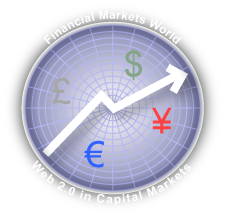 Financial Markets World held its conference, Web 2.0/Enterprise 2.0 in the Capital Markets Industry, in New York City on 17 September 2007. Invited as a panelist on the bleeding edge track, “Web 3.0: Where Are We Going,” I nonetheless had time to scribble some notes to cover some of the sessions. Financial Markets World held its conference, Web 2.0/Enterprise 2.0 in the Capital Markets Industry, in New York City on 17 September 2007. Invited as a panelist on the bleeding edge track, “Web 3.0: Where Are We Going,” I nonetheless had time to scribble some notes to cover some of the sessions.
Enterprise 2.0 is being adopted by investment banks and the capital markets industry, but adoption is being dampened by two flies in the ointment: 1) the industry is highly regulated, and compliance forces firms to have control of their data, which means CIOs are hesitant to try new technology that may introduce risk; 2) enterprise 2.0 doesn’t yet have a locked and loaded business case. It’s early, and all conference sessions reflected that.
The Global Human Capital Journal’s coverage comprises summaries of all the sessions, as well as more in-depth coverage of three of the sessions. To access all the articles in one click, use the Financial Markets World tag. This article contains the summaries as well as my analysis and conclusions of […]
Growing Collaboration Culture Will Force Compliance Breakthroughs—Moving to London
 The Global Human Capital Journal’s coverage of Financial Markets World’s Web 2.0 in the Capital Markets Industry conference continues. In this session, Eran Barak, Global Head of Strategy for Reuters, moderated a discussion with panelists David P. Olener, Director Legal Discovery Solutions at Orchestria, and Warren Roy, President & CEO of Global Relay Communications. They are well qualified to discuss this topic: As a former litigator, Olener has extensive experience with complex discovery and has consulted to numerous Fortune 100 clients in compliance, security and risk management. Roy’s company is a hosted compliance archiving and messaging suite used by over 1,200 financial and legal firms for regulatory purposes. The Global Human Capital Journal’s coverage of Financial Markets World’s Web 2.0 in the Capital Markets Industry conference continues. In this session, Eran Barak, Global Head of Strategy for Reuters, moderated a discussion with panelists David P. Olener, Director Legal Discovery Solutions at Orchestria, and Warren Roy, President & CEO of Global Relay Communications. They are well qualified to discuss this topic: As a former litigator, Olener has extensive experience with complex discovery and has consulted to numerous Fortune 100 clients in compliance, security and risk management. Roy’s company is a hosted compliance archiving and messaging suite used by over 1,200 financial and legal firms for regulatory purposes.
Their consensus was that enterprise 2.0, notably IM (instant messaging, chat) introduces significant issues with highly regulated financial services firms. Although this is widely known, many of the details of how the technologies can pose problems were illuminating. We will provide a summary of the panel before adding our insights.
Enterprise 2.0 Technologies and Regulatory Issues IM is […]
A Glimpse Inside the Emerging Divide between Wall Street Professionals—How Many Goldman Employees Are on Facebook?
 The Global Human Capital Journal’s coverage of Financial Markets World’s Web 2.0 in the Capital Markets Industry conference continues. In this session, Tom Steinthal of the BSG Alliance wrapped the conference by crystallizing several Web 2.0 concepts with passion and panache. Tom is Managing Director of BSG Alliance’s Financial Services practice. Previously he has managed equities technology teams at Goldman Sachs, Donaldson, Lufkin & Jenrette, Credit Suisse, JPMorgan Chase and Prudential. Further back, he led Nasdaq technology teams and designed and implemented Nasdaq trade order management and market making systems. He has been a member of various Nasdaq and NASD technology committees and has been Series 7, 3 and 55 licensed. The Global Human Capital Journal’s coverage of Financial Markets World’s Web 2.0 in the Capital Markets Industry conference continues. In this session, Tom Steinthal of the BSG Alliance wrapped the conference by crystallizing several Web 2.0 concepts with passion and panache. Tom is Managing Director of BSG Alliance’s Financial Services practice. Previously he has managed equities technology teams at Goldman Sachs, Donaldson, Lufkin & Jenrette, Credit Suisse, JPMorgan Chase and Prudential. Further back, he led Nasdaq technology teams and designed and implemented Nasdaq trade order management and market making systems. He has been a member of various Nasdaq and NASD technology committees and has been Series 7, 3 and 55 licensed.
Wall Street firms will increasingly get caught up in several threads of culture change, but he emphasized two: the generational divide and, related to it, collaboration vs. control. In this context, “building an enterprise 2.0 system ’employees’ will use” must take into account very different styles of working and […]
Just Released—CSRA Market Advisory Highlights How I-Banks are Using Web 2.0 to Drive Competitiveness
![Enterprise 2.0 A Game-Changer for Investment Banks [Market Advisory]](http://rollyson.net/wp-content/uploads/2007/09/Mkt_Advisory.gif) This summer, “Enterprise 2.0” began to get legs as the new moniker for applying Web 2.0 to the enterprise, reflecting that pragmatists are raising their eyes for an exploratory glance. The market advisory shares how global investment banks are using Enterprise 2.0, and it suggests action steps for executives to take this year and next. Here is the executive summary and a few choice concluding points: This summer, “Enterprise 2.0” began to get legs as the new moniker for applying Web 2.0 to the enterprise, reflecting that pragmatists are raising their eyes for an exploratory glance. The market advisory shares how global investment banks are using Enterprise 2.0, and it suggests action steps for executives to take this year and next. Here is the executive summary and a few choice concluding points:
Enterprise 2.0 Enables Executives to Digitize and Monetize Collaboration for the First Time
This is so simple that many will miss it and open themselves to disruptive competition…
Banks increasingly use wikis, blogs and other Web 2.0 tools for mission-critical processes, as shown through the examples of Citi, DrKW, Morgan Stanley, ING and JP Morgan.. Enterprise 2.0 is a new term that denotes corporate adoption of Web 2.0 and social software tools. It offers investment banks an unusual opportunity to reduce risk and improve their earnings and profits by increasing returns on process, human and knowledge capital. However, Enterprise 2.0 also confronts banks […]
Pervasive Consumer Connectivity Vision Upstaged by Enterprise Web 2.0 Collaboration
 Cisco’s John Chambers is a master technology marketer who quickens your pulse with technology fire and brimstone. However, as the long-time CEO of Cisco, which epitomized the rise of the (Silicon) Valley when it was briefly the most valuable company in the U.S. in 2000, he has seen the company through the tech bust and proven that he has substance and staying power. Although a hypemeister extraordinaire, he may have crystallized the promise of the Enterprise Web 2.0 better than any other speaker at Digital Hollywood Chicago. Cisco’s John Chambers is a master technology marketer who quickens your pulse with technology fire and brimstone. However, as the long-time CEO of Cisco, which epitomized the rise of the (Silicon) Valley when it was briefly the most valuable company in the U.S. in 2000, he has seen the company through the tech bust and proven that he has substance and staying power. Although a hypemeister extraordinaire, he may have crystallized the promise of the Enterprise Web 2.0 better than any other speaker at Digital Hollywood Chicago.
Chambers’ demos of whiz-bang consumer entertainment scenarios were intriguing but far less interesting to an enterprise-focused audience than his accounts of how Cisco had drastically increased its already-leading efficiency in mergers and acquisitions by collaborating with Web 2.0 tools like wikis. We anticipate that his consumer-focused vision will be consummated far in the future, but his message about enterprise collaboration is achievable this year—for those who are looking for it.
Chambers described an emerging future of networks and communication that revolved around pervasive video, […]
Now Everyone Is a Producer—How Will User-Generated Content Affect Traditional Media?
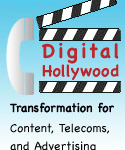 User-generated media (UGM) represents a poignant dichotomy within the context of Digital Hollywood Chicago: panelists and speakers represented a full spectrum of players that provide the capability for people to communicate, work and entertain themselves, but they have in common that they represent business interests. These players are in the business of commercializing communication. Consumers (aka “users,” “people”) represent personal interests: they communicate because they want to; they have little commercial interest in most of their communication. User-generated media (UGM) represents a poignant dichotomy within the context of Digital Hollywood Chicago: panelists and speakers represented a full spectrum of players that provide the capability for people to communicate, work and entertain themselves, but they have in common that they represent business interests. These players are in the business of commercializing communication. Consumers (aka “users,” “people”) represent personal interests: they communicate because they want to; they have little commercial interest in most of their communication.
Panelists grappled with this reality but did not address it directly. They explored business models for UGM—and mostly came up empty. The problem that UGM poses to providers is two-fold: UGM costs providers money in terms of bandwidth and other resources. It also carries a considerable opportunity cost, which is hard to measure but palpable: it crowds out commercial content by occupying customers in two ways: creating UGM and experiencing others’ UGM.
UGM is also difficult to compete against because its producers play by much different rules: they usually produce for free, while commercial producers have high costs. UGM producers […]
Rebooting Kraft—CEO Outlines Growth Strategy clearly shows the innovation imperative: A Play in Two Acts, Starring the Consumer.
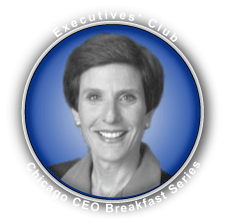 Irene B. Rosenfeld, Chairman & Chief Executive Officer of Kraft Foods, outlined her vision for relaunching Kraft at the Executives’ Club of Chicago’s Chicago CEO Breakfast on May 30, 2007 at the Mid-America Club. She was enthusiastic about the company’s second lease on life: having spun off of Altria this spring, the company is newly independent, and she was eager to share her plan to drive growth by addressing the “eye of the consumer.” Irene B. Rosenfeld, Chairman & Chief Executive Officer of Kraft Foods, outlined her vision for relaunching Kraft at the Executives’ Club of Chicago’s Chicago CEO Breakfast on May 30, 2007 at the Mid-America Club. She was enthusiastic about the company’s second lease on life: having spun off of Altria this spring, the company is newly independent, and she was eager to share her plan to drive growth by addressing the “eye of the consumer.”
Kraft Foods is the second largest food company in the world and the largest in North America. It has seven brands that produce revenue of over $1 billion and fifty that bring in over $100 million each. Central to her strategy is leveraging Kraft’s formidable brand portfolio and other economies of scale. Rosenfeld “came home to Kraft” about a year ago, having had highly visible leadership roles at the company in the past and the top job at Frito-Lay immediately prior.
[…]
Leadership, Trust and the Globally Integrated Enterprise reports on IBM’s CEO as he articulated a prescient vision for the enterprise—adapting to the Knowledge Economy.
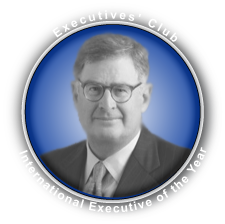 Samuel J. Palmisano, Chairman, President and Chief Executive Officer of IBM Corporation, outlined a new version of the enterprise at a lunch honoring him with the Executives’ Club of Chicago’s Thirteenth Annual International Executive of the Year Award April 12, 2007 at the Chicago Hilton. Entitled “Leadership, Trust and the Globally Integrated Enterprise,” his speech emphasized key points from his Summer 2006 article of the same name in Foreign Affairs. He was especially interesting to hear due to his experience with leading one of the world’s foremost global enterprises as well as his insight from serving global enterprises in every industry. Samuel J. Palmisano, Chairman, President and Chief Executive Officer of IBM Corporation, outlined a new version of the enterprise at a lunch honoring him with the Executives’ Club of Chicago’s Thirteenth Annual International Executive of the Year Award April 12, 2007 at the Chicago Hilton. Entitled “Leadership, Trust and the Globally Integrated Enterprise,” his speech emphasized key points from his Summer 2006 article of the same name in Foreign Affairs. He was especially interesting to hear due to his experience with leading one of the world’s foremost global enterprises as well as his insight from serving global enterprises in every industry.
Yesterday’s model for the global enterprise, the multinational corporation (MNC), looks increasingly outdated due to widespread adoption of standards-based technology, increasingly standardized work processes and a liberalizing regulatory environment. Today, knowledge-based resources are available globally, and the enterprise’s means to create value is choosing how and where to tap the resources to […]
Visions for Technology Leadership
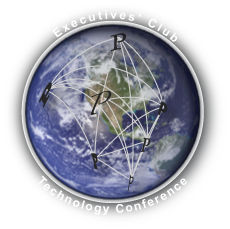 After Gary Forsee’s luncheon address, a diverse panel of executives took the stage to discuss global technology leadership. Hardik Bhatt, CIO of the City of Chicago, Steve Goldman, Director of Architecture, the Chicago Mercantile Exchange, Raymond Spencer, CEO of Kanbay International, and David Weick, Global CIO of McDonald’s, shared their visions for Chicago’s global role in the world. Janet Kennedy, Midwest General Manager of Microsoft, gracefully moderated the panel discussion. The Executives’ Club of Chicago’s quarterly Technology Conference took place March 8 at the Chicago Hilton. After Gary Forsee’s luncheon address, a diverse panel of executives took the stage to discuss global technology leadership. Hardik Bhatt, CIO of the City of Chicago, Steve Goldman, Director of Architecture, the Chicago Mercantile Exchange, Raymond Spencer, CEO of Kanbay International, and David Weick, Global CIO of McDonald’s, shared their visions for Chicago’s global role in the world. Janet Kennedy, Midwest General Manager of Microsoft, gracefully moderated the panel discussion. The Executives’ Club of Chicago’s quarterly Technology Conference took place March 8 at the Chicago Hilton.
“Getting global” can mean many things, and panelists hit the issue from many directions. I’ll venture that, more than anything, it means changing one’s mindset, focus and approach, all of which are difficult to measure. All panelists represented organizations that had had international operations for decades, so how is global different?
[…]
How to Increase Your Payback from Using LinkedIn
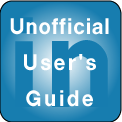 LinkedIn is a “social” site that will prove to be of rare benefit to business executives and professionals in building individualized collaborative networks, as I explained in detail in the GHCJ Review of LinkedIn. However, LinkedIn is seriously lacking in providing a step-by-step guide to help the motivated executive to tap its real value. The functionality of the website is easy to use, but many of the finer points of LinkedIn are lost on the majority of users. This guide attempts to address that. LinkedIn is a “social” site that will prove to be of rare benefit to business executives and professionals in building individualized collaborative networks, as I explained in detail in the GHCJ Review of LinkedIn. However, LinkedIn is seriously lacking in providing a step-by-step guide to help the motivated executive to tap its real value. The functionality of the website is easy to use, but many of the finer points of LinkedIn are lost on the majority of users. This guide attempts to address that.
[…]
|
|
 Financial Markets World held its conference, Web 2.0/Enterprise 2.0 in the Capital Markets Industry, in New York City on 17 September 2007. Invited as a panelist on the bleeding edge track, “Web 3.0: Where Are We Going,” I nonetheless had time to scribble some notes to cover some of the sessions.
Financial Markets World held its conference, Web 2.0/Enterprise 2.0 in the Capital Markets Industry, in New York City on 17 September 2007. Invited as a panelist on the bleeding edge track, “Web 3.0: Where Are We Going,” I nonetheless had time to scribble some notes to cover some of the sessions.
 The Global Human Capital Journal’s coverage of Financial Markets World’s Web 2.0 in the Capital Markets Industry conference continues. In this session, Eran Barak, Global Head of Strategy for Reuters, moderated a discussion with panelists David P. Olener, Director Legal Discovery Solutions at Orchestria, and Warren Roy, President & CEO of Global Relay Communications. They are well qualified to discuss this topic: As a former litigator, Olener has extensive experience with complex discovery and has consulted to numerous Fortune 100 clients in compliance, security and risk management. Roy’s company is a hosted compliance archiving and messaging suite used by over 1,200 financial and legal firms for regulatory purposes.
The Global Human Capital Journal’s coverage of Financial Markets World’s Web 2.0 in the Capital Markets Industry conference continues. In this session, Eran Barak, Global Head of Strategy for Reuters, moderated a discussion with panelists David P. Olener, Director Legal Discovery Solutions at Orchestria, and Warren Roy, President & CEO of Global Relay Communications. They are well qualified to discuss this topic: As a former litigator, Olener has extensive experience with complex discovery and has consulted to numerous Fortune 100 clients in compliance, security and risk management. Roy’s company is a hosted compliance archiving and messaging suite used by over 1,200 financial and legal firms for regulatory purposes. Cisco’s John Chambers is a master technology marketer who quickens your pulse with technology fire and brimstone. However, as the long-time CEO of Cisco, which epitomized the rise of the (Silicon) Valley when it was briefly the most valuable company in the U.S. in 2000, he has seen the company through the tech bust and proven that he has substance and staying power. Although a hypemeister extraordinaire, he may have crystallized the promise of the Enterprise Web 2.0 better than any other speaker at Digital Hollywood Chicago.
Cisco’s John Chambers is a master technology marketer who quickens your pulse with technology fire and brimstone. However, as the long-time CEO of Cisco, which epitomized the rise of the (Silicon) Valley when it was briefly the most valuable company in the U.S. in 2000, he has seen the company through the tech bust and proven that he has substance and staying power. Although a hypemeister extraordinaire, he may have crystallized the promise of the Enterprise Web 2.0 better than any other speaker at Digital Hollywood Chicago. User-generated media (UGM) represents a poignant dichotomy within the context of Digital Hollywood Chicago: panelists and speakers represented a full spectrum of players that provide the capability for people to communicate, work and entertain themselves, but they have in common that they represent business interests. These players are in the business of commercializing communication. Consumers (aka “users,” “people”) represent personal interests: they communicate because they want to; they have little commercial interest in most of their communication.
User-generated media (UGM) represents a poignant dichotomy within the context of Digital Hollywood Chicago: panelists and speakers represented a full spectrum of players that provide the capability for people to communicate, work and entertain themselves, but they have in common that they represent business interests. These players are in the business of commercializing communication. Consumers (aka “users,” “people”) represent personal interests: they communicate because they want to; they have little commercial interest in most of their communication. Irene B. Rosenfeld, Chairman & Chief Executive Officer of Kraft Foods, outlined her vision for relaunching Kraft at the Executives’ Club of Chicago’s Chicago CEO Breakfast on May 30, 2007 at the Mid-America Club. She was enthusiastic about the company’s second lease on life: having spun off of Altria this spring, the company is newly independent, and she was eager to share her plan to drive growth by addressing the “eye of the consumer.”
Irene B. Rosenfeld, Chairman & Chief Executive Officer of Kraft Foods, outlined her vision for relaunching Kraft at the Executives’ Club of Chicago’s Chicago CEO Breakfast on May 30, 2007 at the Mid-America Club. She was enthusiastic about the company’s second lease on life: having spun off of Altria this spring, the company is newly independent, and she was eager to share her plan to drive growth by addressing the “eye of the consumer.” Samuel J. Palmisano, Chairman, President and Chief Executive Officer of IBM Corporation, outlined a new version of the enterprise at a lunch honoring him with the Executives’ Club of Chicago’s Thirteenth Annual International Executive of the Year Award April 12, 2007 at the Chicago Hilton. Entitled “Leadership, Trust and the Globally Integrated Enterprise,” his speech emphasized key points from his Summer 2006 article of the same name in Foreign Affairs. He was especially interesting to hear due to his experience with leading one of the world’s foremost global enterprises as well as his insight from serving global enterprises in every industry.
Samuel J. Palmisano, Chairman, President and Chief Executive Officer of IBM Corporation, outlined a new version of the enterprise at a lunch honoring him with the Executives’ Club of Chicago’s Thirteenth Annual International Executive of the Year Award April 12, 2007 at the Chicago Hilton. Entitled “Leadership, Trust and the Globally Integrated Enterprise,” his speech emphasized key points from his Summer 2006 article of the same name in Foreign Affairs. He was especially interesting to hear due to his experience with leading one of the world’s foremost global enterprises as well as his insight from serving global enterprises in every industry. After Gary Forsee’s luncheon address, a diverse panel of executives took the stage to discuss global technology leadership. Hardik Bhatt, CIO of the City of Chicago, Steve Goldman, Director of Architecture, the Chicago Mercantile Exchange, Raymond Spencer, CEO of Kanbay International, and David Weick, Global CIO of McDonald’s, shared their visions for Chicago’s global role in the world. Janet Kennedy, Midwest General Manager of Microsoft, gracefully moderated the panel discussion. The Executives’ Club of Chicago’s quarterly Technology Conference took place March 8 at the Chicago Hilton.
After Gary Forsee’s luncheon address, a diverse panel of executives took the stage to discuss global technology leadership. Hardik Bhatt, CIO of the City of Chicago, Steve Goldman, Director of Architecture, the Chicago Mercantile Exchange, Raymond Spencer, CEO of Kanbay International, and David Weick, Global CIO of McDonald’s, shared their visions for Chicago’s global role in the world. Janet Kennedy, Midwest General Manager of Microsoft, gracefully moderated the panel discussion. The Executives’ Club of Chicago’s quarterly Technology Conference took place March 8 at the Chicago Hilton. LinkedIn is a “social” site that will prove to be of rare benefit to business executives and professionals in building individualized collaborative networks, as I explained in detail in the GHCJ Review of LinkedIn. However, LinkedIn is seriously lacking in providing a step-by-step guide to help the motivated executive to tap its real value. The functionality of the website is easy to use, but many of the finer points of LinkedIn are lost on the majority of users. This guide attempts to address that.
LinkedIn is a “social” site that will prove to be of rare benefit to business executives and professionals in building individualized collaborative networks, as I explained in detail in the GHCJ Review of LinkedIn. However, LinkedIn is seriously lacking in providing a step-by-step guide to help the motivated executive to tap its real value. The functionality of the website is easy to use, but many of the finer points of LinkedIn are lost on the majority of users. This guide attempts to address that.